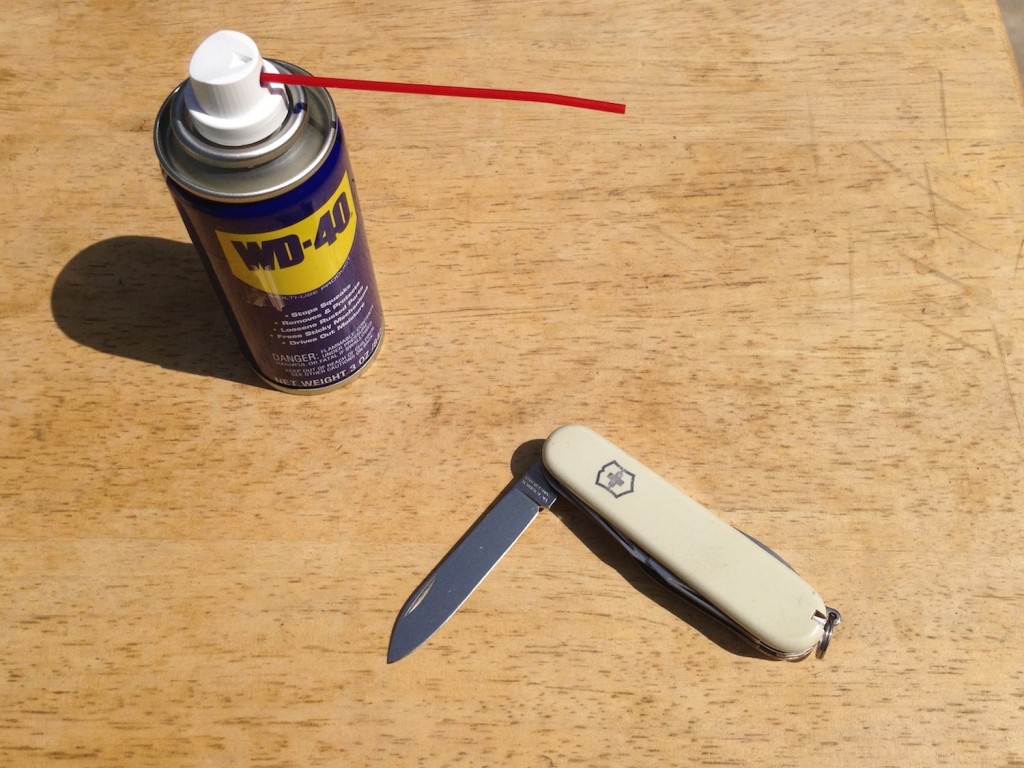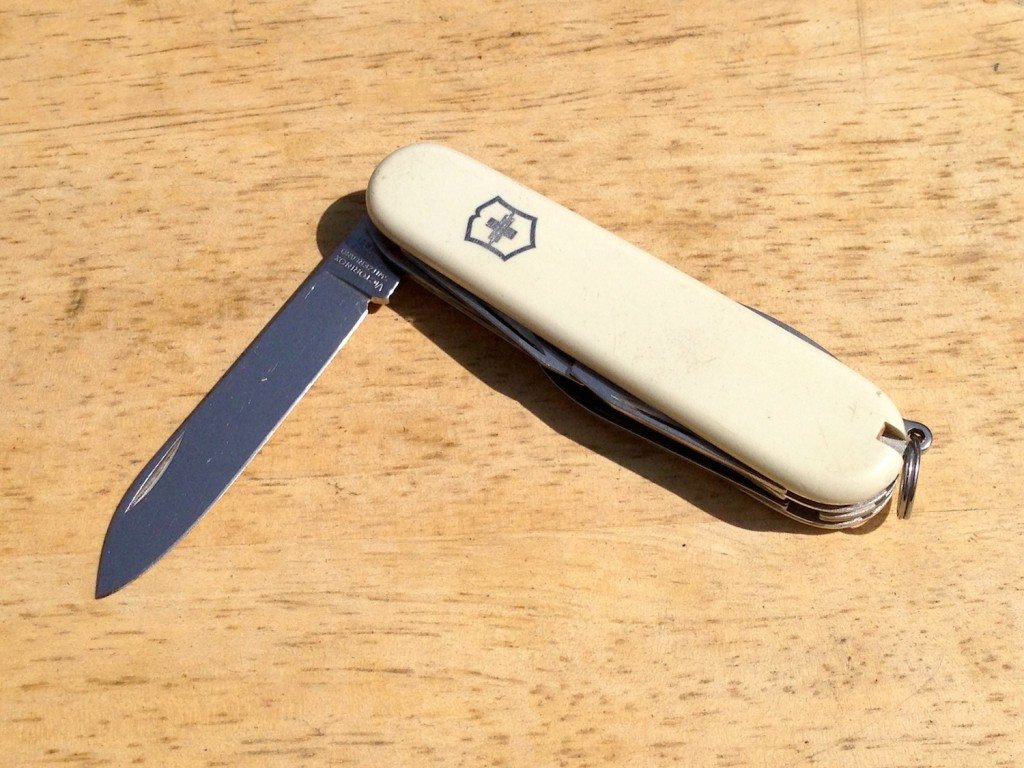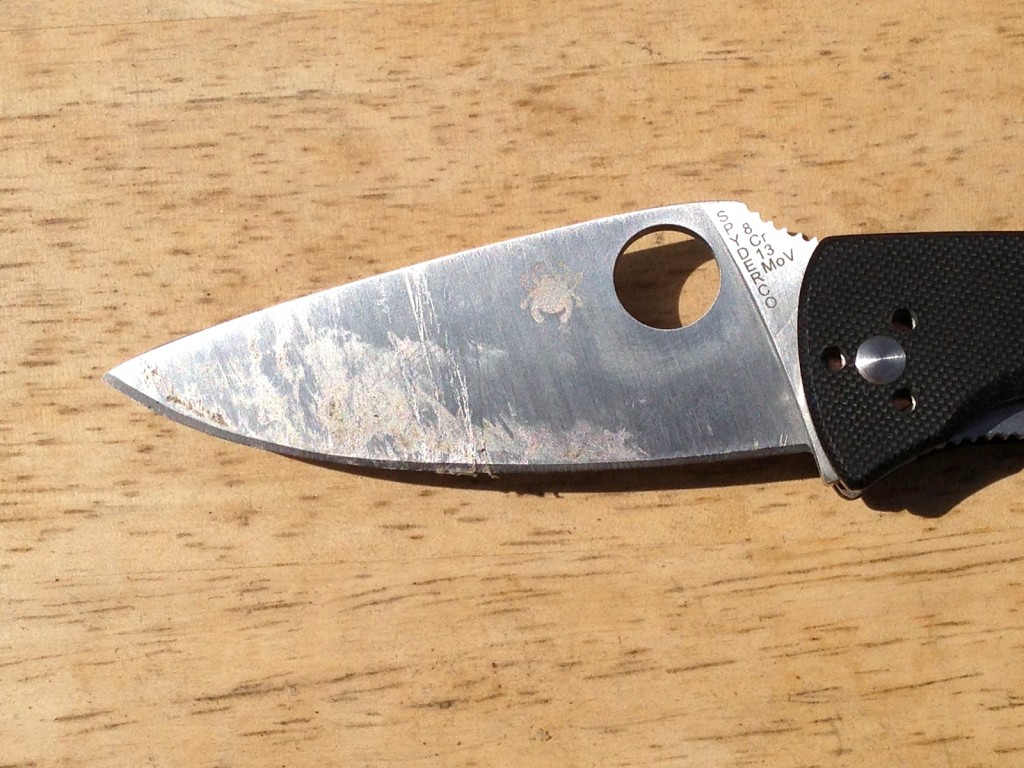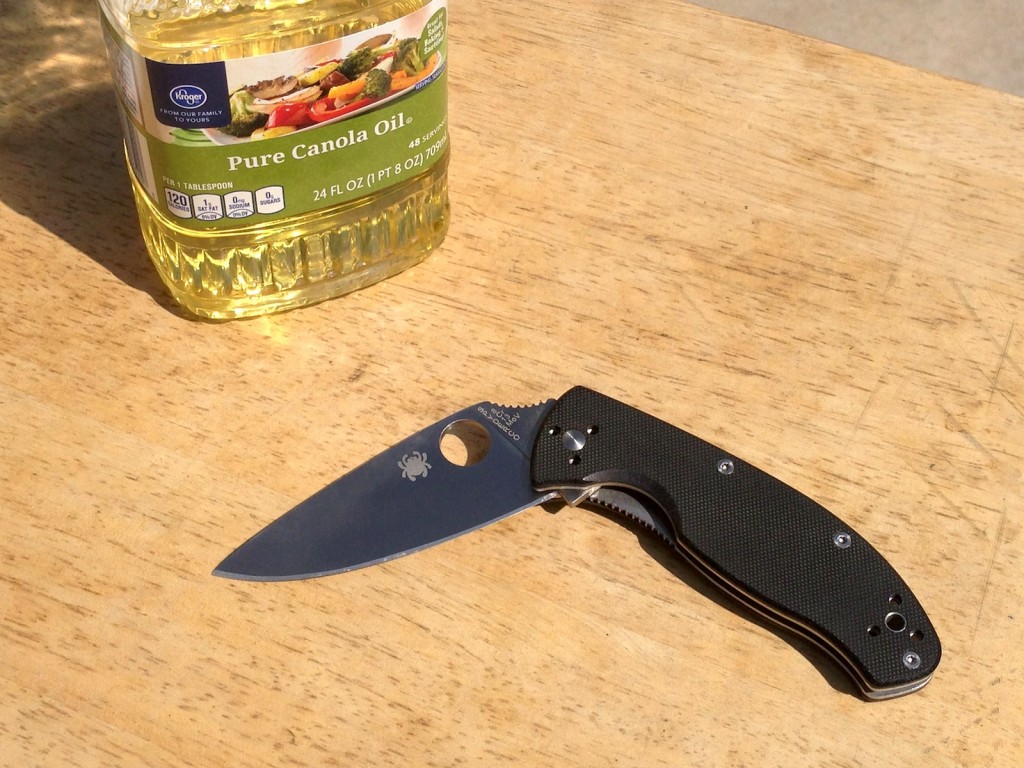We’ve entered the bizarre and convenient era of online buying. Thanks to companies like Amazon and Knife Depot, I get packages sent to my doorstep almost every day. Whether by a preprogramming from childhood or a general excitement, I simply can’t wait to tear open the box to see my new prize, even if it’s just a nonstick cake pan.
In my rush to open the box, my knife is what takes the most abuse. Whether because I’m impatient (or my wife is doing the opening), my knives always end up with a pile of tape gunk that doesn’t come off in warm water.
So what’s a man to do?
We’ve got that answer for you below.
Method 1: WD-40

Even though tape residue seems to be embedded on a blade, it’s actually fairly easy to remove. You have a number of options to take them off, but we’ll show you two different ways to remove the residue and the pros/cons. The first method we’re going with is the WD-40 way.
WD-40, for the uninitiated, is a panacea for most ailing machinery. It’s a go-to product for things that are squeaky or rusty, but it also has some other unique uses like getting crayon out of things or softening up leather.
The spray is the perfect lubrication for getting gunk off a knife blade.
My white Swiss Army Knife was given to me by my dad a while back, but it’s been whiling away in a drawer, so I decided to take it out and give it a thorough cleaning. Unfortunately, I didn’t have the foresight to take a before picture, but the blades were coated in tape residue.
I sprayed some WD-40 onto the blade and used a rag to wipe it. With some pressure, the residue comes right off. Here’s a closer look at the clean blade.

WD-40 is something that pretty much everyone has somewhere in the house, so it’s easy to get a hold of. You can also use cleaners specific to the task. The WD-40 acts as a lubricant, though the effectiveness on a knife blade is debatable. Tuf-Glide is another cleaner that’s widely used.
It’s easy enough to use WD-40, but there are downsides. The smell is strong and whenever you touch the blade, you can count on that smell sticking with you. Although there are reports that WD-40 is safe to use with foods, it’s not something you want to do. That’s why it’s not a good option if you happen to use your knife in food preparation.
If you are using your knife with food, the next method is just as effective and completely safe.
Method 2: Cooking oil

Next up we have my Spyderco Tenacious that was in pretty bad shape from the tape residue. I use this knife to cut up apples and whatnot, so I didn’t want to use anything harsh like mineral oils.
So I grabbed a bottle of canola oil and got to work. Oil is a quick and easy way to get your blade nice and clean. Olive oil, vegetable oil, and even skin oil will do the trick without worrying about contaminants leaking into your food.

Just dab a little onto a rag and wipe it down. It’ll be as good as new.
Preventative measures
Once your knife is clean, you should do your best to keep it that way. Preventing residue from getting on the blade can be easily prevented by cutting the cardboard box instead of the tape. If you can’t break the habit of cutting the tape, take a moment to rinse off the knife in warm water afterward to prevent it from sticking.
Everybody has their own way to remove tape, but these are among our favorites. How do you remove tape residue from your blades?




October 3, 2014 at 4:26 am
Acetone… Better than the rest!
October 22, 2014 at 5:54 pm
I appreciate, cause I discovered exactly what I used to be looking for.
You have ended my four day lengthy hunt! God Bless you man. Have a
nice day. Bye
October 25, 2014 at 8:37 am
I’ve never seen anyone call mineral oil “harsh” before. It’s actually sold in pharmacies as an intestinal lubricant. Anytime I use it to remove sticky residue from a knife blade, I wash the blade afterward with soap and water anyway. I don’t even want oil residue on knives that will be carried in my pocket or used to cut food, and it’s certainly not necessary for corrosion protection on most stainless blades, anyway.
September 15, 2015 at 9:26 pm
Ballistol is Safe to ingest and cleans a blade up in a jiffy! It also Protects the blade.
I have also used rubbing Alcohol to remove tape residue. Works fine.
August 24, 2016 at 10:30 am
Never heard of Ballistol – THANK YOU FOR THE TIP!
April 12, 2017 at 3:22 pm
Rubbing alcohol on a rag or paper towel has worked the best for me. Easier than going out and buying cleaner.
October 16, 2018 at 12:13 pm
I use isopropyl alcohol. A small bottle can be bought for a buck at any dollar store. Works effortlessly and sterilizes the blade at the same time. I use the alcohol frequently for this purpose, as i use my pocket knife regularly to cut food. Also, the alcohol evaporates with no lingering smell.
October 17, 2018 at 9:36 am
Yup. Alcohol is now my go-to cleaner for knife blades. I wrote about it in a more recent article.
November 24, 2020 at 11:13 pm
I use alcohol myself. The problem with stickers, tapes and decals is that sometimes they get very messy with water or when wet. You can buy Be Gone or other adhesive remover, but you’d have to wash the blade afterwards.
Sometimes I’ll use a sponge scrubber with alcohol or even soap and clean that way. You can finish with something like a Brillow pad which actually can help remove gummy residue.
May 24, 2022 at 8:47 pm
Don’t laugh, piss works in a pinch.